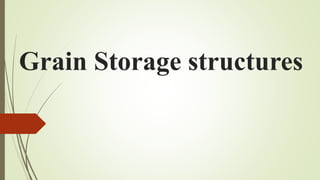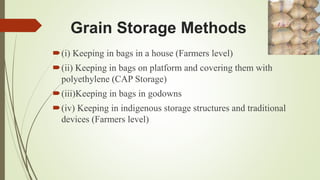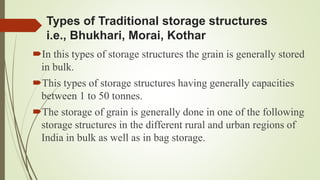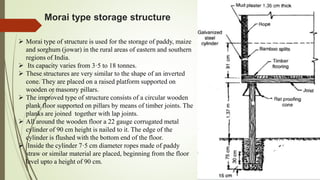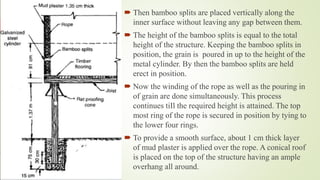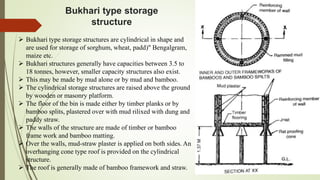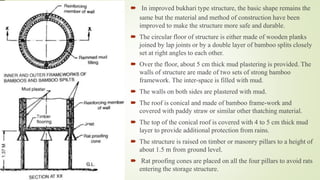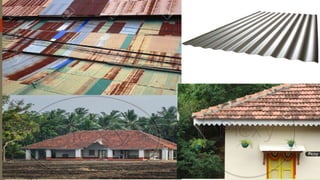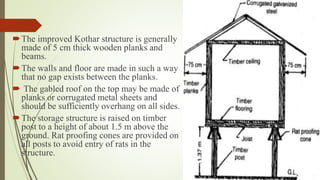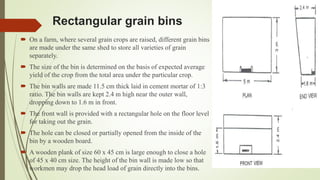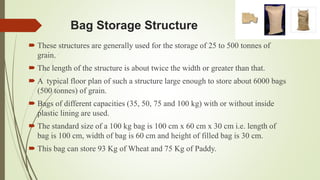The document discusses various traditional and improved grain storage structures used in India. It notes that while grain production has increased, storage capacity has not, resulting in losses. It then describes different traditional structures like morai, bukhari, and kothar that store grain in bulk. Improved structures include cylindrical bins made of concrete and rectangular bins under farm sheds. Bag storage structures are also used to store thousands of bags of grain.
